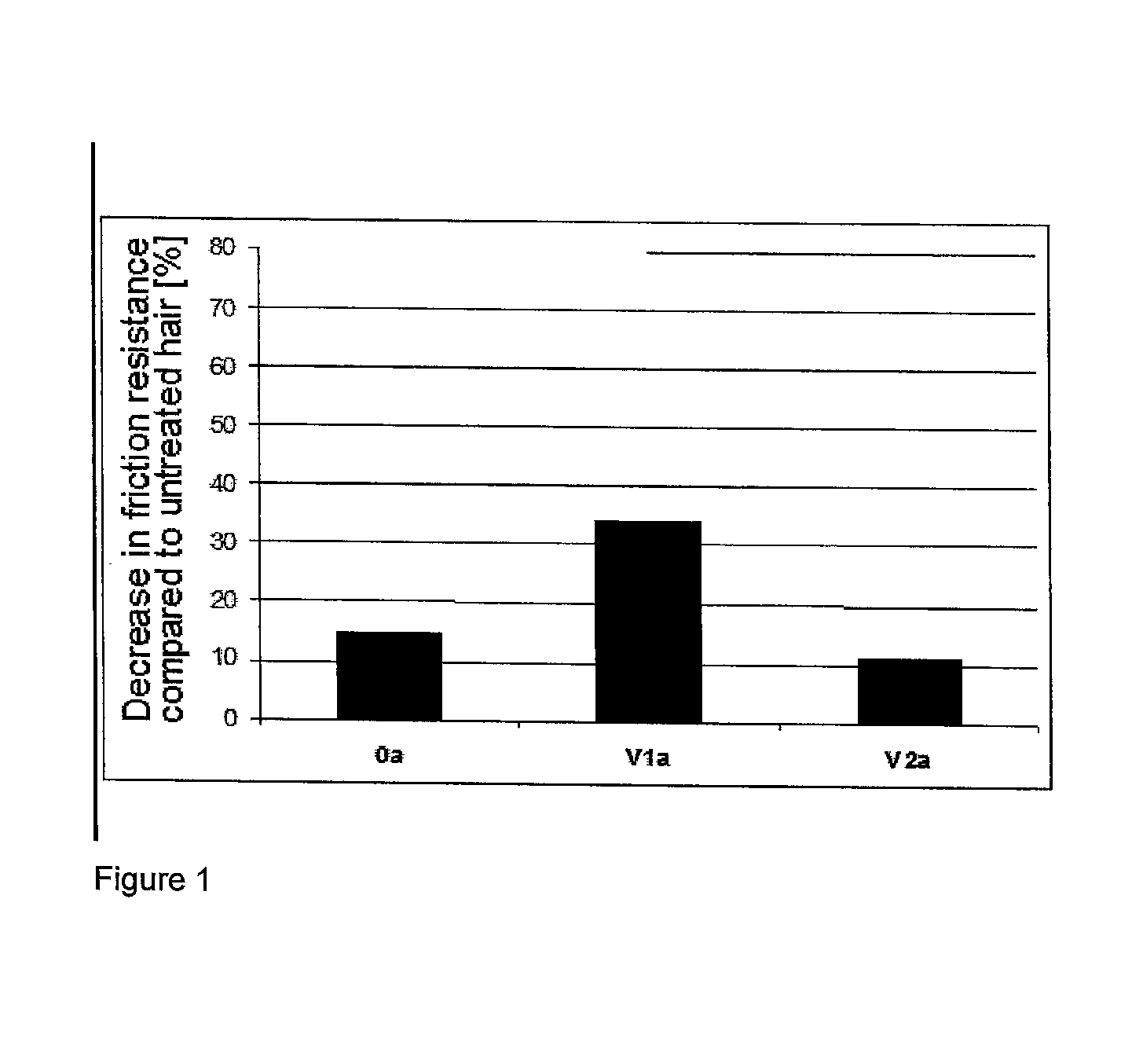Novel amino-group-containing siloxanes, processes for their preparation and use
a technology of amino-groups and siloxanes, which is applied in the field of new amino-group-containing siloxanes, can solve the problems of low yield, inability to adapt to air and water, and the thiol-ene chemistry described just described does not offer a universal teaching relating to the simple and universal preparation of amino acids, so as to achieve less yellowing and increase thermal as well as oxidative stability.
- Summary
- Abstract
- Description
- Claims
- Application Information
AI Technical Summary
Benefits of technology
Problems solved by technology
Method used
Image
Examples
examples
Preparation of the Amino-Acid- and Peptide-Modified Siloxanes According to the Invention
[0123]The recording and interpretation of the NMR spectra is known to the person skilled in the art. Reference may be made here to the book “NMR Spectra of Polymers and Polymer Additives” by A. Brandolini and D. Hills, published in 2000 by Verlag Marcel Dekker Inc.
synthesis example s1
According to the Invention
MA2D28
[0124]100 g of an α,ω-divinylsiloxane with a chain length of 30 monomer units, 17 g of cysteine ethyl ester hydrochloride (98% strength purity, obtainable from Sigma Aldrich), 118 g of isopropanol and 1.46 g of azobisisobutyronitrile (98% strength purity obtainable from Sigma Aldrich) were combined in a three-neck flask equipped with a KPG stirrer, an internal thermometer and a reflux condenser, and stirred for 5 hours at 65° C. The isopropanol was then distilled off at 90° C. and while applying an oil pump vacuum (at 1 mbar). The mixture was rinsed out several times using water / NaCl / diethyl ether. Finally, the separated-off organic phase was dried over sodium sulphate and the diethyl ether was distilled off. This gave a slightly cloudy, yellowish, viscous liquid. The 29Si-NMR spectrum revealed a complete conversion of the vinyl groups.
Synthesis Example S2
According to the Invention
MA2D78
[0125]190 g of an α,ω-divinylsiloxane (N=80), 14.2 g of L-cyste...
synthesis example s3
According to the Invention
M2DA4D41
[0126]50 g of a polyvinylsiloxane with a vinyl equivalent of 1000 g / mol, 9.5 g of L-cysteine ethyl ester hydrochloride (98% obtainable from Sigma Aldrich), 71.4 g of isopropanol and 1.9 g of azobisisobutyronitrile (98% strength purity obtainable from Sigma Aldrich) were combined in a three-neck flask equipped with a KPG stirrer, an internal thermometer and a reflux condenser, and stirred for 6 hours at 70° C. The isopropanol was then distilled off at 90° C. and while applying an auxiliary vacuum (at 1 mbar). The mixture was rinsed out several times using water / NaCl / diethyl ether. Finally, the separated-off organic phase was dried over sodium sulphate and the diethyl ether was distilled off. This gave a slightly cloudy, viscous liquid. Complete conversion of the vinyl groups was evident from the 29Si-NMR spectrum.
PUM
 Login to View More
Login to View More Abstract
Description
Claims
Application Information
 Login to View More
Login to View More - R&D
- Intellectual Property
- Life Sciences
- Materials
- Tech Scout
- Unparalleled Data Quality
- Higher Quality Content
- 60% Fewer Hallucinations
Browse by: Latest US Patents, China's latest patents, Technical Efficacy Thesaurus, Application Domain, Technology Topic, Popular Technical Reports.
© 2025 PatSnap. All rights reserved.Legal|Privacy policy|Modern Slavery Act Transparency Statement|Sitemap|About US| Contact US: help@patsnap.com



